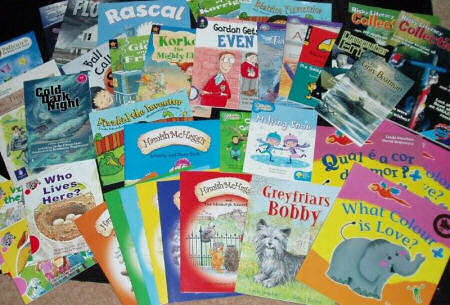Why do I read?
I try to ask myself that question, and only supply one answer. However, I've had so many positive experiences with reading that I just can't provide one simple response. In grade school, I was crazy about reading. I had so many positive experiences that encouraged me to read on my spare time. For example, in elementary school, every Friday my mother would visit for "Fun Friday Reading." I can still remember that I would look forward to every Friday afternoon for reading. I was allowed to curl up in a corner, and whisper to my Mother as I read. Also, my teachers filled the classroom with several age appropriate novels that drew my attention. I would love to read Goosebumps, The Magic Tree House, and several mystery novels. All of these novels attracted my attention. I enjoyed reading because it was exciting and unpredictable. My favorite genre was and still is mystery, because there is always a turn in events.
Currently, as a college junior, I still enjoy to read on my spare time. However, my reasons for reading differ from my reasons from my childhood. For example, now I enjoy reading because I like to learn new vocabulary. As humans, I do believe that we are "sponges," and I believe that we should absorb as much knowledge as humanly possible. Reading not only allows me to extend my vocabulary, but it has also improved my grammar and pronunciation. For me, reading is relaxing and educational at the same time. So, I thoroughly enjoy it in my spare time, and I constantly encourage my peers to read as well.
What do I read?
Well, typically I enjoy reading any novel that falls in the genre of mystery. I typically enjoy the genre of mystery because the events are always unpredictable. I find myself more intrigued and determined to solve the "crime" in a novel. Some of my favorite mystery novels include Eye of the Needle by Ken Follett, and The Choirboys by Joseph Wambaugh. These novels absolutely blew my mind away. I read both books in a span of four days. I couldn't help myself.
Also, I do enjoy reading historical novels. One of our greatest senses as humans is the ability to see. I enjoy viewing old photographs that relate to a person's history. These photographs could range from sixty years ago to two hundred years ago. Furthermore, I enjoy pictures of famous historical leaders that have had an impact on our society, such as President Abe Lincoln. I find many historical novels that include pictures of these figures. I find it so fascinating to not only view these historical images, but also read about these images. Overall, reading is one of my favorite hobbies. As a future teacher, I will strongly encourage my students to read on their spare time, and to enjoy reading as much as I do.



